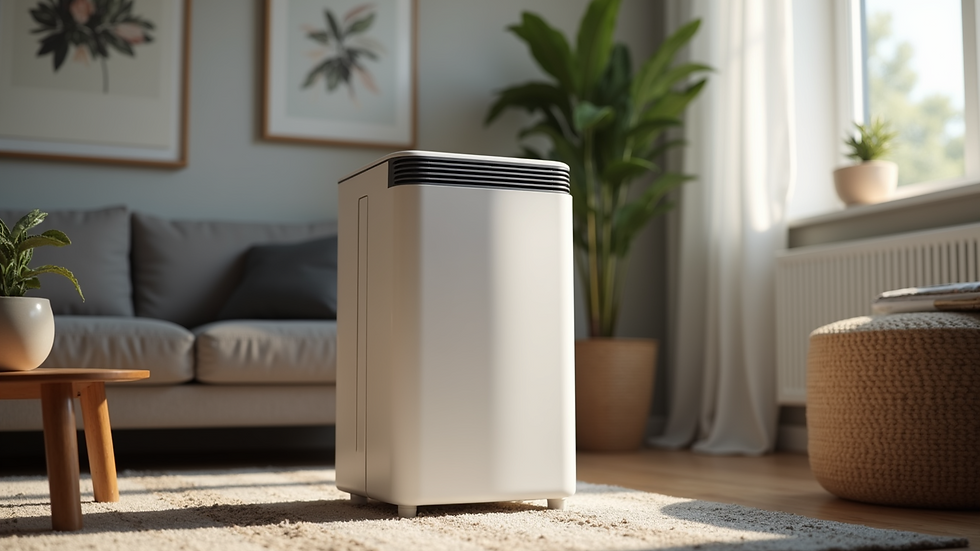Unlocking the Secrets to Mastering Condensation in Airtight Builds for a Healthier Home
- hawkbuildingdesign
- Aug 5
- 3 min read
As the trend towards airtight building design continues to rise, a significant concern emerges: condensation. This issue can lead to mold growth, structural damage, and various health problems. Understanding how to effectively manage condensation in these tightly sealed environments is essential for homeowners, builders, and architects. In this post, we’ll explore practical ways to handle condensation, ensuring you create a healthier living space for yourself and your family.
Understanding Condensation
Condensation occurs when warm, moist air meets a cooler surface, resulting in the formation of water droplets. In airtight buildings, limited air exchange causes moisture to build up more quickly, especially in high humidity areas like kitchens and bathrooms.
For instance, during cooking, the average home generates about 2-4 liters of water vapor. If this moisture isn’t managed properly, it can settle on surfaces and lead to larger problems. Homes without sufficient ventilation might experience structural damage and health issues, such as respiratory problems caused by mold exposure.
Identifying Sources of Moisture
The first step in managing condensation is identifying common moisture sources in your home. Here are some primary contributors:
Cooking and Dishwashing: Cooking generates steam, and dishwashing releases high humidity.
Showers and Baths: Bathrooms without proper ventilation can become humid quickly.
Indoor Plants: While they add life to your home, plants can raise indoor humidity levels significantly.
By addressing these sources, you can proactively reduce moisture and its associated risks.
The Importance of Ventilation
Mechanized Ventilation Systems
In airtight buildings, passive ventilation may not be enough. Mechanical systems, such as Heat Recovery Ventilation (HRV), can maintain consistent airflow. These systems can recover about 80% of the heat from stale air, improving energy efficiency.

These systems filter stale air while introducing fresh air, helping to decrease indoor humidity and minimize condensation risks.
Natural Ventilation Techniques
Though mechanical methods are highly effective, don’t overlook natural ventilation. Opening windows during dry, pleasant days can greatly improve airflow. Using exhaust fans in moisture-rich areas like kitchens and bathrooms is also vital. These fans can reduce humidity levels by as much as 50% within minutes after cooking or bathing.
Insulation Matters
The quality of your home's insulation impacts condensation management. Poor insulation can lead to cold surfaces where condensation forms.
Focusing on high-performance insulation, such as spray foam, can provide excellent thermal resistance. For example, homes with proper insulation can reduce energy costs by 30% or more while preventing condensation-related issues.
Humidity Control Devices
Maintaining balanced humidity levels is critical. Keeping humidity between 30% and 50% is ideal for preventing condensation and promoting comfort.
Dehumidifiers are excellent for moisture management. They can remove significant amounts of moisture from the air. For instance, a standard dehumidifier can extract up to 70 pints of water daily, making the environment less prone to condensation.

Some smart dehumidifiers feature remote monitoring, allowing you to effortlessly track and adjust humidity levels.
Building Materials and Design Choices
Selecting the right materials is vital for combating condensation. Some materials absorb moisture, exacerbating the problem. Conversely, moisture-resistant materials can help reduce condensation risk.
Additionally, thoughtful design can enhance moisture management. Implementing thermal breaks and ensuring proper drainage helps prevent cold bridges where condensation can form.
Regular Maintenance Checks
Even with robust strategies in place, regular maintenance is critical. Schedule annual inspections for your ventilation and dehumidification systems to detect issues early.
Keep an eye out for leaks or mold growth. Addressing problems early can prevent costly repairs and extensive damage down the line.
Foster a Healthier Indoor Environment
Creating a healthier home in an airtight build requires ongoing effort. Here are a few actionable tips to enhance your indoor space:
Monitor Indoor Humidity: Use a hygrometer to keep an eye on humidity levels throughout the year.
Clean and Maintain Ventilation Systems: Regular filter changes and ensuring ducts are clear enhance system efficiency.
Educate Family Members: Share knowledge about moisture management with everyone in your household. Collective efforts can significantly reduce humidity.
Achieve a Healthier Home
Effectively managing condensation in airtight builds goes beyond technical challenges; it is essential for a comfortable, safe, and healthy home. By understanding moisture sources, implementing effective ventilation, choosing suitable materials, and conducting regular checks, you can create a condensation-free living space. Start applying these strategies today and enjoy a healthier, more enjoyable home environment for tomorrow!





Comments